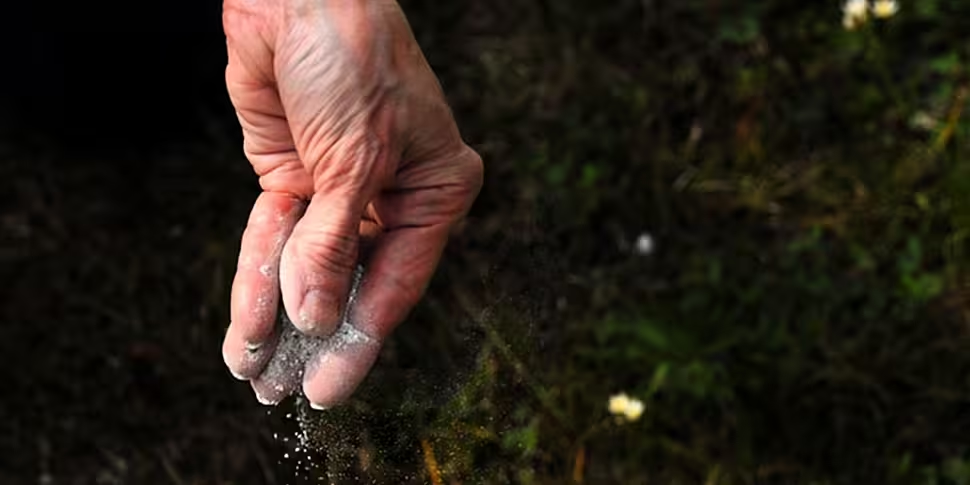In Ireland, a country with a history steeped in ties to the Catholic Church, we’ve generally become more accustomed to the dust to dust part of saying farewell to loved ones. Burial remains the most common way of laying the deceased to rest nationwide, but in Dublin, things are a little bit different. With only four places in the entire country where the dead can be cremated, the Glasnevin Trust, overseers of five cemeteries and two crematoria, now says that more than half of its funeral activities are devoted to cremation.
The trust is responsible for cremation facilities at Glasnevin and Newland’s Cross, and demand has grown so sharply in the 34 years since Ireland’s first crematorium opened in Glasnevin – so much so that the trust is building a third crematorium in Dardistown, near Santry.
“In 1982, I think we carried out about 110 cremations in the whole year,” George McCullough, chief executive of the Glasnevin Trust, told Newstalk reporter Andrea Gilligan, who paid a visit to learn more about the process. “This year we will probably carry out 1200 to 1300 cremations at Glasnevin. Cremation is now accounting for 51 or 52% of all the deaths that happen and burials that take place here.”
"There was a bit of fear about it, people didn’t know about it..."
McCollough, having looked at how cremation has grown in popularity not only in Ireland but all over the world, now expects that the number will go as high as 70%, turning the tables of the traditions we have of parting ways with our deceased. The change in attitude didn’t happen overnight, as a lot of misconceptions existed about what actually happens when a body is cremated.
“As it only arrived here in 1982, there was a bit of fear about it, people didn’t know about it,” McCullough said. “But the more people who attended cremation, the more people thought they’d prefer that than being in the ground.”
This change is attitude also seems to match the increasingly secular nature of Ireland, with the cultural importance of Catholicism holding less sway with Irish people than it did even a decade ago. Preference can also be influenced by cost, as a traditional burial is not a cheap option.
“If you don’t own a grave you have to go buy one, and maybe finding one in your own locality can be difficult. To buy a new grave, the minimum cost is €2,000, going up to €4,000, €6,000, €8,000. And then to open that grave would be €900 to €1,000. So very quickly you’re into a lot of money.”
Whether families choose a religious or secular service, the process at Glasnevin generally follows the same pattern, according to John Campbell, a technician on site with more than 30 years experience.
“During the service, the priest or layperson would do their part, and at the end there is the committal, where the curtains go across,” he said. “And that’s the final time the family sees the coffin, and they can see it through the faint curtain we have, because there’s a light shining on it. The family focuses on it for a couple of minutes, and then the heavier curtain goes across, while a piece of music is playing.”
“If they’re happy enough, we’ll play it for them”
Having personally been involved in the cremation process of thousands of men, women, and children, Campbell has heard it all when it comes to the musical choices made for those final moments. “Anything from The Chattanooga Choo Choo through to Lady Gaga, Queen, or The Beatles. You’re often handed a USB stick and you wouldn’t know what’s on it till you hear it playing, but it obviously means something to the people.
“If they’re happy enough, we’ll play it for them,” Campbell says, though he appears to have a fondness for something like Ennio Morricone’s iconic piece Gabriel’s Oboe from the film The Mission.
After the committal, the families and those paying their respects usually depart Glasnevin, while the coffin is taken away for the actual cremation. Rarely, only maybe five times in his entire career as a technician, can Campbell remember a family member coming to witness the burning part of it, but any loved one expressing a desire to do so will be welcomed into the workroom.
Anyone who does will see the Diamond 2000 Cremator, a gas-fired machine installed there in 2000. The machine is mostly automated, working through eight separate processes. In an hour and a half, the remains and the coffin are transformed into the ashes.
“During the process, the ashes remains are raked into the secondary chamber, but the floors are staggered so they can’t get mixed up. And then after a period of time, the ashes are taken from the secondary chamber and placed into this tray in the floor,” Campbell said.
That is one of the biggest questions people still have about cremation, according to George McCullough. Along with whether the coffin gets burnt (“What else would we do with it?!”), the most pressing concern is what – or who – might get mixed into the ashes.
“We get asked, ‘Do you give us exactly our ashes back?’, and the answer is yes. We give you back exactly what you gave us. Albeit in an altered form,” he said.
You can listen back to Andrea Gilligan's full report on Glasnevin Crematorium below:









